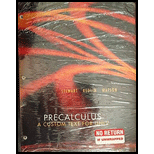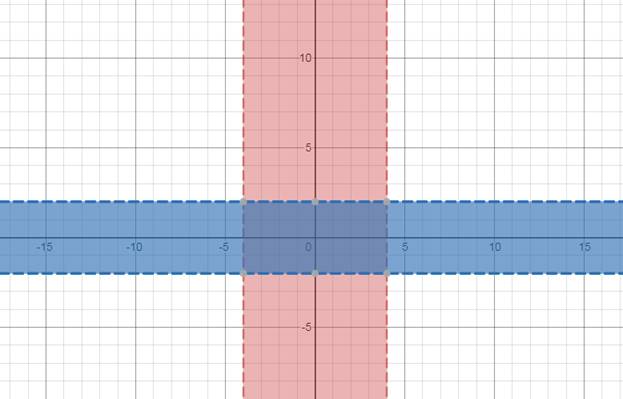
Concept explainers
To graph: The region is given by :
Explanation of Solution
Given information:
The region is given by :
Graph:
In order to solve an equation graphically, find all the values that satisfy the equation. To solve an equation graphically, draw the graph for each side, member, of the equation and see where the curves cross, are equal. The x values of these points, are the solutions to the equation.
The overlapped region or the common region shows the region given by the above set.

Interpretation:
In order to solve an equation graphically, find all the values that satisfy the equation. To solve an equation graphically, draw the graph for each side, member, of the equation and see where the curves cross, are equal. The x values of these points, are the solutions to the equation
The overlapped region or the common region shows the region given by the above set.
Chapter 1 Solutions
Precalculus - A Custom Text for UNLV
 Calculus: Early TranscendentalsCalculusISBN:9781285741550Author:James StewartPublisher:Cengage Learning
Calculus: Early TranscendentalsCalculusISBN:9781285741550Author:James StewartPublisher:Cengage Learning Thomas' Calculus (14th Edition)CalculusISBN:9780134438986Author:Joel R. Hass, Christopher E. Heil, Maurice D. WeirPublisher:PEARSON
Thomas' Calculus (14th Edition)CalculusISBN:9780134438986Author:Joel R. Hass, Christopher E. Heil, Maurice D. WeirPublisher:PEARSON Calculus: Early Transcendentals (3rd Edition)CalculusISBN:9780134763644Author:William L. Briggs, Lyle Cochran, Bernard Gillett, Eric SchulzPublisher:PEARSON
Calculus: Early Transcendentals (3rd Edition)CalculusISBN:9780134763644Author:William L. Briggs, Lyle Cochran, Bernard Gillett, Eric SchulzPublisher:PEARSON Calculus: Early TranscendentalsCalculusISBN:9781319050740Author:Jon Rogawski, Colin Adams, Robert FranzosaPublisher:W. H. Freeman
Calculus: Early TranscendentalsCalculusISBN:9781319050740Author:Jon Rogawski, Colin Adams, Robert FranzosaPublisher:W. H. Freeman
 Calculus: Early Transcendental FunctionsCalculusISBN:9781337552516Author:Ron Larson, Bruce H. EdwardsPublisher:Cengage Learning
Calculus: Early Transcendental FunctionsCalculusISBN:9781337552516Author:Ron Larson, Bruce H. EdwardsPublisher:Cengage Learning





